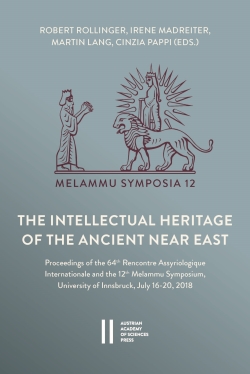
The Intellectual Heritage of the Ancient Near East, pp. 815-830, 2023/04/12
Proceedings of the 64th Rencontre Assyriologique Internationale and the 12th Melammu Symposium, University of Innsbruck, July 16‒20, 2018
At first sight, the Neo-Assyrian provincial system can be seen as a highly uniform, standardized structure. But the system was not as stable as it seems; it was constantly changing. Anatolia was always a kind of borderland and a changing and expanding scene for the Assyrians. So this region (specifically for the research, present-day Turkey) provides a perfect opportunity to investigate the expansion of the provincial system. This expansion of the system, accompanied by constant change was always influenced by several factors. Time is one of the most evident ones: as the frontier of the empire expanded, the same province will have shifted from the role of borderland to that of core province. Also, Assyrian rule must have had a different degree and type of influence in a province after a few decades as opposed to hundreds of years. The ethnic background of a region may constitute another factor. For example, if a region had belonged to the empire during the Middle Assyrian period and had an established Assyrian population, it will have served as a more solid base for a newly formed state. Also, non-Assyrian local populations (Aramean, Luwian, Hurrian, or others), and their cultures (Aramean, Syrio-Hittite, Hurrian, etc.) might have had different effects. To incorporate a city-state or a region ruled by a semi-nomadic tribe respectively required different approaches. Finally, geography is also an inevitable factor: mountainous terrain and lowlands require different approaches from the centre to form a functioning province.